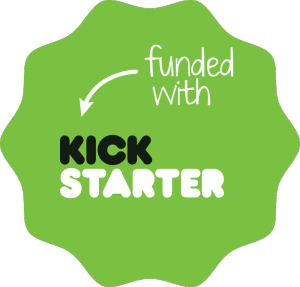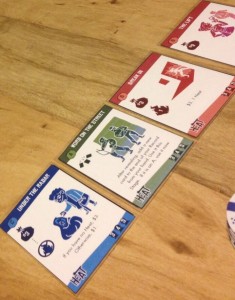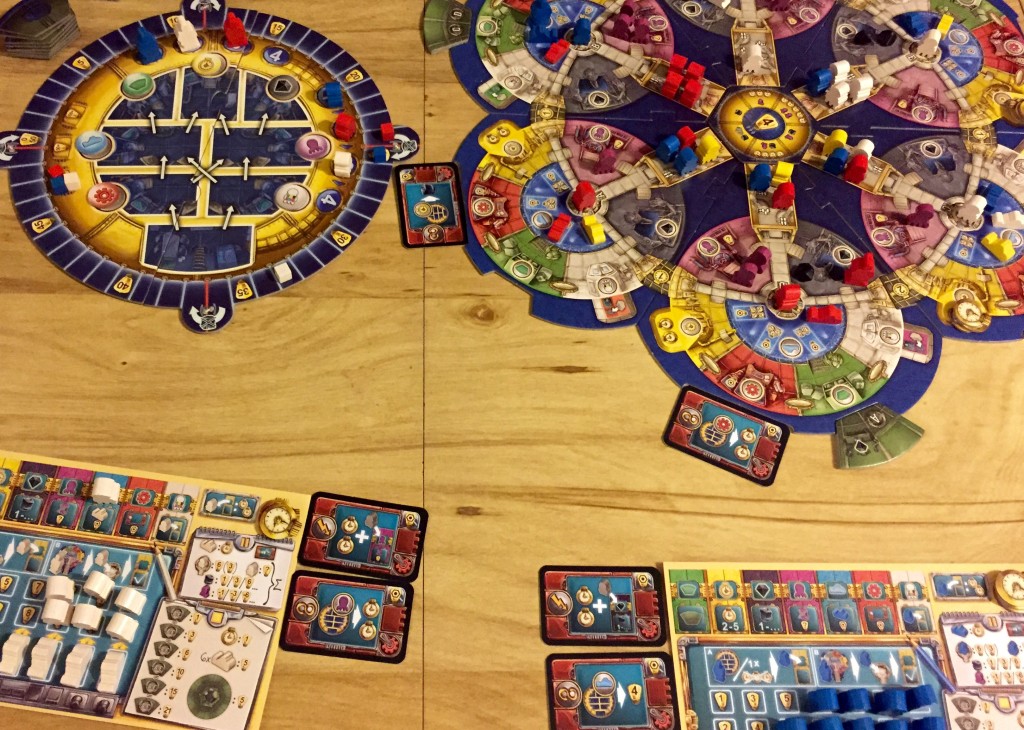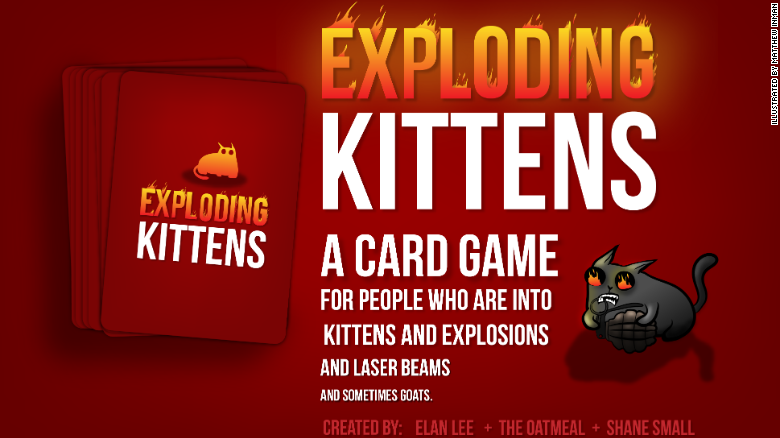 Kickstarter has been a mixed blessing for the tabletop gaming industry. It provides a platform for small publishers and indie designers to get their game in front of more eyes than previously possible. It can give bigger publishers and distributors a barometer of how popular a game might be. It can give creators of any background to fund a dream project.
Kickstarter has been a mixed blessing for the tabletop gaming industry. It provides a platform for small publishers and indie designers to get their game in front of more eyes than previously possible. It can give bigger publishers and distributors a barometer of how popular a game might be. It can give creators of any background to fund a dream project.
Or it can be a platform that enables unprepared creators to crash and burn while trying to handle thousands of dollars of other people’s money.
With a recent influx of board game Kickstarters that have recently launched, funded, or fulfilled their rewards, it’s a perfect time to look at not just the games, but how they utilized this platform.
Heat
The Game: Heat is a quick and fun game of intrigue and bluffing for 3-5 players. Over the course of three rounds, players will craft their diabolical plans, carry out their heists, and accumulate ill-gotten gains while trying to avoid the gaze of the authorities. Because other players are also perpetrating heists, you need to keep your eye on how much “heat” you’re taking. At the end of three heists, your score is your net earnings after you buy off whatever heat you have at game’s end. When I need something light and stylish, Heat fits the bill nicely.
The Kickstarter: I started with Heat because it provides a good baseline for board game Kickstarter campaigns. The pledges were fairly basic, the target seemed reasonable, and the stretch goals didn’t knock your socks off — but also wouldn’t bog down fulfillment. The publisher, Asmadi Games, did a lot of little fun things with the campaign, like “The Steal” pledge level (One lucky backer each day got the game for only $1).
Both the publisher and the designer were also very visible during the process, even after the campaign hit some of the potholes common with board game campaigns. The target of shipping rewards only two months after the game funded was aggressive, hit some obstacles. This delayed the fulfillment of the basic reward (the game) a few months, and the extra awards even further. The delay wasn’t egregious (especially by Kickstarter standards), and the fact that backers had access to a print-and-play version allowed us to introduce the game to friends while awaiting our physical copies.
AquaSphere
The Game: Congratulations! You’re a marine biologist studying the underwater realm in the state-of-the-art AquaSphere. But you can’t rest on your laurels — your grants rely on your ability to generate new knowledge, so you’ll want to ensure that your research is more impressive than your colleagues. AquaSphere is a strategy game for 2-4 players that combines worker placement with programming and planning. You have multiple paths to victory, but you have to balance your strategies with the limited time and resources available to you. It’s the kind of game that gets my brain buzzing, while also distracting me with cute octopus meeples.
The Kickstarter: The campaign for AquaSphere brings up the question of the purpose of Kickstarter, especially for the tabletop gaming industry. There were very few reward tiers, no stretch goals, few updates, and the game arrived exactly when it was promised. But the reason they utilized KS was very different than we saw in the previous game. With Heat, you had a small but proven publisher, with a creator who’s very active in the indie design scene. They have a tribe of fans, and tangible examples of success, but not (one would imagine) a whole lot of capital laying around. The popular understanding of KS would make it seem the perfect platform for what Heat needed.
Now look at AquaSphere. The developer and artist both have both won tabletop gaming’s most prestigious awards. The designer is Stefan Feld, who’s name alone can generate sales. Tasty Minstrel Games isn’t the publisher — they are the North American distributor, since the game was published last fall by German company Hall Games. In other words, it’s a Kickstarter campaign that looked a lot like a pre-order.
The distributor saw Kickstarter as a way to employ a barometer. Those of us who love strategy board games will remember the frustration of trying to get a copy of Terra Mystica two years ago, only to discover that the publisher woefully under-estimated demand (and pre-orders). The Kickstarter campaign for AquaSphere looked to alleviate that potential problem (and of over-estimating demand). I was satisfied with it, and I love the game. But it really blurs that line between crowdsourced funding and (pre-)pre-order.
Cthulhu Wars
The Game: It’s all about area control, giant monsters, and expendable cultists. This game for 2+ players is a mix of area control and planning. You play as a faction of Lovecraftian gods and monsters who’re about to bring about the end of humanity. You open gates, summon monsters, despoil regions, and fight across a map of Earth. Whoever can bring about the most doom wins the wars. The basic rules are simple, centering the depth and complexity on the various factions that you can play. I love it.
The Kickstarter: As more and more tabletop games have turned to Kickstarter, the template for epic campaigns has emerged. It usually involves a fan-favorite IP, a big name or two attached to design or illustrate, and it probably involves miniatures. Or at least a lot of figures. The whole thing operates on a scale that dwarfs comprehension: funding in the millions, add-ons and stretch goals as far as the eye can see, and a plethora of updates. So it was with Cthulhu Wars.
Or, so it is with Cthulhu Wars. Despite funding to the impressive (at the time) tune of $1.4 million over 18 months ago, this campaign is still in the long process of fulfillment. That seems to happen with a lot of these epic campaigns — with so many moving parts at this scale, any hiccups will have downstream effects and likely cause delays. As of now, the base game has made its way to backers, with the expansions and stretch goals still in process.
Despite the delays, this has been one of my favorite Kickstarters. The team at Petersen Games are responsive, and they make time at cons to talk or demo. The delivered core game is beautiful and immensely enjoyable, which is no small matter. I enjoyed it so much, I’m already looking at their next (much less epic in scale) Kickstarter.
Conan
The Game: It’s a licensed Conan board game in the vein of HeroQuest or Descent. ‘Nuf said, right? Oh, and the publisher has an impressive list of artists and designers contributing to final product.
The Kickstarter: What was I saying about epic campaigns? $3.3 million, a ridiculous amount of add-ons and stretch goals, big names, and an army of figures. Even though I didn’t back this one (only so much discretionary income to spend on so many Kickstarter projects), the idea of a modern HeroQuest sorely tempted me. It funded last week, so we’ll see if the complexity and scale affect the project’s timelines.
Oh, and if any backers need another player, I’m up for crushing a few enemies and driving them before me.
Epic PVP: Fantasy
The Game: For something a little smaller in scale, yet still heavy on the direct conflict, we have Epic PVP: Fantasy. This 2-player (or 2-team) game is simple in concept: players choose two decks of cards, one for their race (human, orc, elf, etc.) and one for their class (rogue, barbarian, ranger, etc.). They shuffle together the decks and fight each other until only one is left standing.
The Kickstarter: We’re back to the realm of more standard Kickstarter campaigns, comparatively. Epic PVP: Fantasy has less than a week to go, but will be funded with plenty of stretch goals when it concludes. It’s published by a Kickstarter veteran (Fun to 11 Games) who has a track record of delivering on time (or early), and who’ve partnered with a well-known publisher (AEG) to put out Epic PVP.
This campaign has its Kickstarter savvy on full display. Putting stretch goals up to a vote, soliciting feedback, and giving backers the chance to play the game all provide backers a level of interactivity. They’ve released half the starter box set in a print-and-play format, and it’s provided both word-of-mouth and design notes. They aren’t the first to do so, but it’s always a welcome part of a Kickstarter campaign.
Don’t Turn Your Back
The Game: This game for 2-4 players combines the mechanics of card-drafting with that of worker placement games. It has me right there. The rules look intriguing, the cards are darkly gorgeous, and the nightmarish setting all speak to me. This combination of factors, as well as the designer’s work on another card-drafting game (Zeppelin Attack), have me on board. The only thing left is to see how it plays.
The Kickstarter: This is similar to the Kickstarter campaign for Epic PVP, in that the publisher (Evil Hat) has a sterling reputation and is a veteran of Kickstarter. They’re more well-known for their RPG work, which may be why Don’t Turn Your Back is only 2/3 of the way to funding with two weeks left. The stretch goals are very basic, but after looking through the preview files of the game, I tend to agree with the designer’s assessment. Throwing in too many add-on cards would potentially unbalance the game, and who wants that?
As with any game, it’ll come down to how much I enjoy the actual gameplay, but I expect to enjoy this one.
Exploding Kittens
The Game: Exploding Kittens looks to be a casual or party game for up to 4 players (or 8, if you get the second deck). During your turn, you draw a card; if you drew an Exploding Kitten, you’re out. Last player left wins. The non-exploding cards in the deck help you to prepare for or avoid the EKs, or force other players to have to deal with them instead.
The Kickstarter: I saved the biggest, most polarizing campaign for the end. With 24 hours to go, Exploding Kittens has already raised over $7.3 million for a slick party game. It’s not a deep game, but a high-luck game of Russian Roulette with really popular art and a delightfully silly theme. It’s also an instance where the game probably could’ve been made without Kickstarter, since The Oatmeal is involved.
That said, Matt Inman (The Oatmeal) is really good at crowd-funded projects, like the Tesla museum. Not just in the sense that he can garner pledges, but in how he engages the backers. The Exploding Kittens‘ stretch goals included not only the usual milestones (number of backers, total funds raised), but also video game-style achievements (e.g., post a picture of ten Batmen in a hot tub). Their final three days of the campaign included a couple of online parties, and a day of providing pizza to volunteers at animal shelters.
In this case, the Kickstarter seems to be less about crowdsourcing funds and more about creating buzz for the project. Sure, the funding was still huge and there’s a tangible product to be created, but the campaign played more like a big performance event than a board game project that needed initial capital. How you view that scenario likely tells me how you view the game and its Kickstarter.
In Summary…
I have a very laissez-faire opinion of Kickstarter projects, but it’s interesting to watch arguments develop around what Kickstarter should be used as or for. Just as different designers will take the same game mechanic and spin it in a new direction, savvy Kickstarter campaigns have started to spin the traditional purpose of the platform into new forms.
And this is all without talking about tabletop RPGs and Kickstarter, which would make a great topic for a follow-up post.











